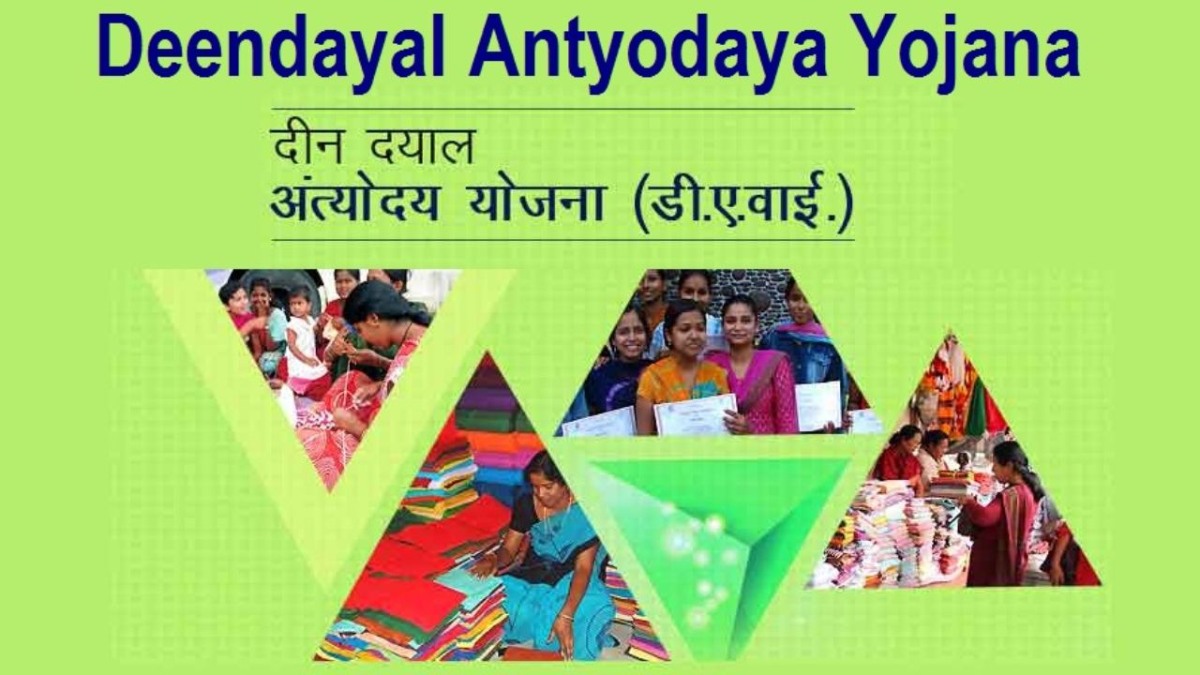The Deendayal Antyodaya Yojana – National Rural Livelihood Mission (DAY-NRLM), implemented by the Ministry of Rural Development, is one of the world’s largest poverty alleviation programmes.
Designed to transform the lives of rural poor households, it works through self-help and collective empowerment, particularly of women, to create sustainable livelihood opportunities across India.
Launched in 2010 by restructuring the earlier Swarnajayanti Gram Swarozgar Yojana (SGSY), the initiative was renamed in 2016 as Deendayal Antyodaya Yojana – National Rural Livelihood Mission (DAY-NRLM).
This centrally sponsored scheme, jointly funded by the Centre and the States, aims to reduce rural poverty through self-employment and skilled wage employment.
The mission mobilizes rural households into Self Help Groups (SHGs), helping them access finance, training, and markets for diversified livelihood opportunities.
Mission Design and Core Components
The DAY-NRLM rests on four key pillars: Social Mobilization and Institution Building, which focuses on promoting sustainable institutions of rural women; Financial Inclusion, aimed at linking Self Help Groups (SHGs) with formal banking systems and affordable credit; Sustainable Livelihoods, which encourages diversification of income through both farm and non-farm enterprises; and Social Inclusion and Entitlement Access, ensuring that the rural poor benefit from convergence with other government welfare schemes.
At its core, the mission builds strong grassroots collectives of women who act as both beneficiaries and changemakers. These groups function as a long-term support system, enabling members to diversify income sources, increase earnings, and improve quality of life.
Women-Centric Empowerment Model
Women’s empowerment is central to DAY-NRLM’s success. The mission promotes economic independence by linking women to credit, markets, and technology through SHGs and federations.
As of June 2025, over 10 crore rural women have been mobilized into 90 lakh SHGs across 28 states and six union territories.
Since 2013, SHGs have availed over ₹11 lakh crore in loans through formal financial institutions — largely collateral-free and supported by interest subvention. These loans are typically collateral-free and supported by interest subsidies. The mission has maintained an impressive repayment rate exceeding 98%, reflecting strong sustainability.
Women trained as Bank Sakhis and Banking Correspondents play a vital role in bridging SHGs and banks, ensuring access to financial services at the village level.
Expanding Livelihood: From Farming to Entrepreneurship
The mission promotes both agricultural and non-agricultural livelihoods. Around 4.62 crore Mahila Kisans (women farmers) have received training in sustainable agro-ecological practices through Krishi Sakhis (agriculture experts) and Pashu Sakhis (livestock experts). These trained workers provide year-round support on productivity, livestock care, and marketing.
Beyond agriculture, DAY-NRLM nurtures micro-enterprises through the Start-up Village Entrepreneurship Programme (SVEP), which has supported over 3.7 lakh enterprises in sectors like handicrafts, food processing, and local services. This diversification has been critical in boosting incomes beyond farming.
Community Resource Network
The mission’s impact is driven by trained community resource persons who provide last-mile services:
Krishi Sakhis: Guide sustainable agriculture and collective marketing.
Pashu Sakhis: Offer animal care and veterinary support.
Bank Sakhis: Facilitate SHG banking and credit linkages.
As of June 2025, there are 3.5 lakh Krishi and Pashu Sakhis and nearly 48,000 Bank Sakhis operating nationwide.
State-Wise Performance and Achievements
Bihar, Uttar Pradesh, and Andhra Pradesh lead in SHG formation and women’s household mobilization.
In FY 2024–25, Uttar Pradesh and Bihar disbursed ₹1,23,326 lakh and ₹1,05,132 lakh as capitalization support, both exceeding their targets.
With total bank loan disbursements amounting to ₹34,83,725 lakh, Andhra Pradesh led all states in facilitating bank loans for Self Help Groups (SHGs).
Maharashtra leads in the number of Mahila Kisans, followed by Uttar Pradesh and Andhra Pradesh. In non-farm enterprises under SVEP, Assam tops the list, with Kerala and West Bengal showing strong performance.
Skilling Rural Youth for Employment
Under its youth-oriented components, DAY-NRLM promotes skill training and entrepreneurship through:
Deen Dayal Upadhyaya Grameen Kaushalya Yojana (DDU-GKY): Placement-linked training for youth aged 15–35, with 17.5 lakh trained and 11.48 lakh placed.
Rural Self Employment Training Institutes (RSETIs): Entrepreneurship training for ages 18–50, with 56.69 lakh trained and 40.99 lakh successfully settled in self-employment.
Leading states include Uttar Pradesh, Odisha, Andhra Pradesh, Rajasthan, Madhya Pradesh, and Karnataka.
Market Access and Capacity Building
To enhance market outreach, the mission organizes SARAS Aajeevika Melas at national and state levels, where SHG women showcase products, network with buyers, and receive business development training.
The National Institute of Rural Development and Panchayati Raj (NIRD&PR) supports ongoing capacity-building in branding, marketing, and business sustainability.
A Model for Community-Led Development
With its emphasis on women’s empowerment, financial inclusion, and sustainable livelihoods, the DAY-NRLM stands as a global model for community-driven poverty alleviation.
By turning rural women into entrepreneurs, leaders, and changemakers, the mission continues to drive inclusive and resilient growth across India’s villages.










